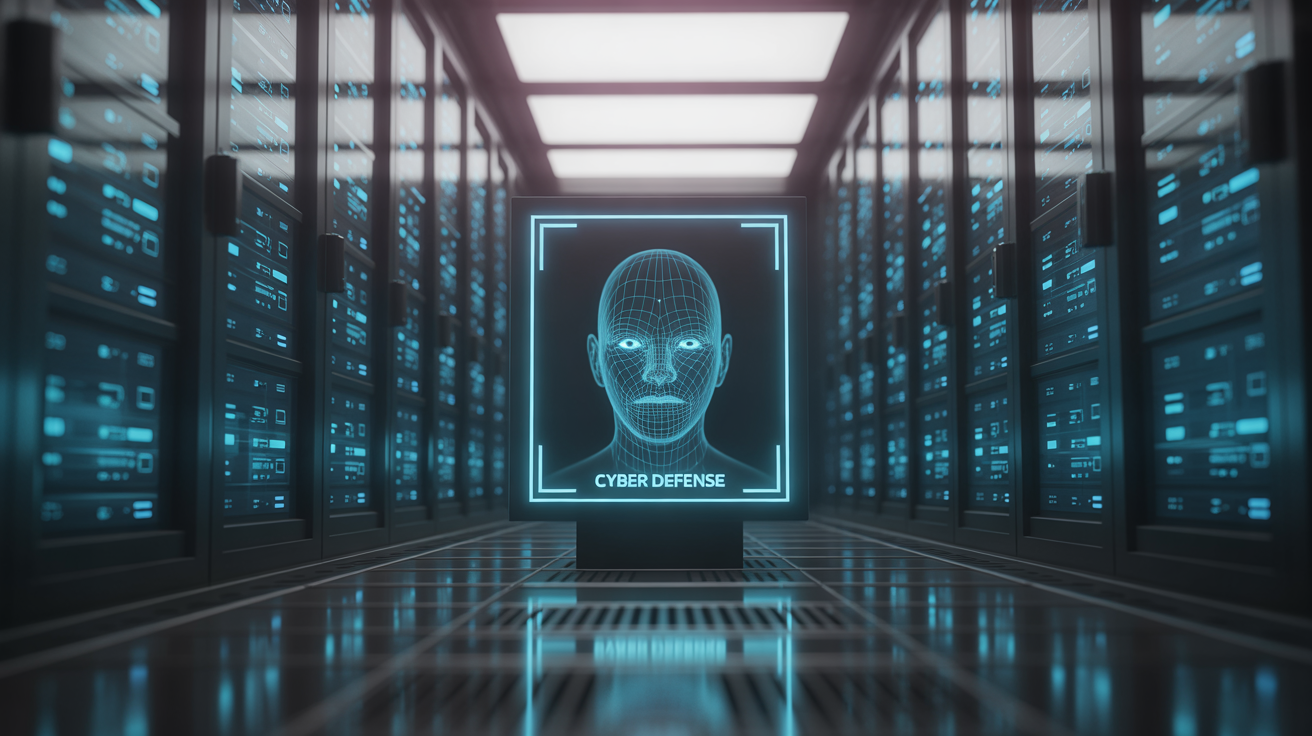In today’s increasingly digital world, securing identity has become a cornerstone of effective cybersecurity. As data breaches, identity theft, and online fraud continue to rise, organizations and governments alike are exploring innovative methods to strengthen their digital defenses. One of the most promising tools emerging in this realm is facial recognition, powered by artificial intelligence (AI). This advanced technology is redefining how we protect personal and organizational data, offering both efficiency and robust security. Here’s how facial recognition is transforming cyber defense and reshaping the future of AI in cybersecurity.
The Rise of Biometric Security
Traditional security systems relied heavily on passwords and PINs. However, these methods have proven to be vulnerable easy to forget, guess, or steal. Biometrics, particularly facial recognition, offer a safer alternative by using unique physical traits that are difficult to replicate. Unlike fingerprints or retina scans, which require physical contact or special equipment, facial recognition provides a seamless, contactless user experience. This ease of use, paired with enhanced security, is why many companies are integrating facial recognition into their cybersecurity infrastructure.
How Facial Recognition Works
Facial recognition technology analyzes facial features such as the distance between the eyes, the shape of cheekbones, and the contour of the lips and jaw. When a user attempts to log into a system, the camera captures their image and compares it to the stored facial data using artificial intelligence algorithms. If there’s a match, access is granted. The process happens almost instantly and has grown significantly more accurate with advances in machine learning.
Artificial Intelligence: The Driving Force Behind Facial Recognition
Facial recognition would not be possible without the power of artificial intelligence. AI algorithms enable the system to learn and improve over time. For example, it can adapt to changes in a person’s appearance, such as growing a beard or wearing glasses. AI can also detect spoofing attempts using photos or videos, making the system more secure against impersonation attacks. This intelligent, adaptive nature positions AI as a critical component of modern cybersecurity strategies.
The Role of AI in Cybersecurity
AI in cybersecurity extends far beyond facial recognition. It is used to detect unusual patterns in network traffic, prevent phishing attacks, and even respond to incidents in real-time. When combined with facial recognition, AI enhances identity verification systems by making them faster, smarter, and more resistant to threats. For instance, AI can flag attempts to gain unauthorized access by detecting subtle anomalies in user behavior or facial data mismatches.
Facial recognition powered by AI fits perfectly into a multi-layered cybersecurity approach, serving as both a preventive and responsive measure. It offers real-time monitoring and response capabilities, which are essential in today’s fast-paced threat environment.
Real-World Applications
- Financial Institutions: Banks and fintech companies are adopting facial recognition for secure mobile banking. It allows customers to log in, verify transactions, and reset passwords without relying on traditional credentials.
- Government Agencies: Border control and law enforcement agencies use facial recognition to verify identities and catch criminals. AI-enhanced systems can scan thousands of faces in crowded places to identify threats in real time.
- Corporate Security: Businesses use facial recognition to control access to sensitive areas or secure devices. It ensures that only authorized personnel can gain entry, even if credentials are stolen.
- Healthcare: Patient identification is critical in healthcare. Facial recognition helps avoid errors in medical records and ensures that sensitive patient data remains protected.
Benefits of Facial Recognition in Cyber Defense
- Enhanced Security: Facial data is nearly impossible to replicate accurately, making it more secure than passwords.
- Convenience: Users don’t have to remember complex passwords or carry physical tokens.
- Faster Authentication: Facial recognition provides quick and seamless access, reducing delays and improving user experience.
- Fraud Reduction: AI-powered systems can detect and block fraudulent access attempts with high precision.
Challenges and Ethical Considerations
Despite its benefits, facial recognition in cybersecurity does raise concerns. Privacy is the most significant issue people are wary about how their facial data is stored, used, or shared. There’s also the risk of surveillance overreach, where governments or corporations might misuse the technology.
To address these issues, clear regulatory frameworks and transparency are essential. Organizations must implement strict data protection protocols and inform users about how their data is handled. Using AI responsibly is crucial to maintaining trust and protecting civil liberties.
The Future of AI in Cybersecurity
As cyber threats evolve, so must our defenses. The integration of facial recognition and artificial intelligence represents a major leap forward in securing identity. We can expect to see more sophisticated systems in the coming years—ones that can verify identity in real time across platforms, devices, and even in low-light or crowded conditions.
Moreover, AI in cybersecurity is moving toward predictive defense, where systems can anticipate threats before they happen. Facial recognition will play a pivotal role in this shift by ensuring that only legitimate users interact with systems, thereby closing a major vulnerability in traditional security setups.
Conclusion
Facial recognition is no longer a futuristic concept it’s a practical, powerful tool in the arsenal of modern cyber defense. Combined with artificial intelligence, it offers an effective solution to the persistent problem of identity verification and unauthorized access. As the digital world becomes more complex, adopting innovative technologies like facial recognition will be essential in safeguarding sensitive data and maintaining trust in digital systems. AI in cybersecurity isn’t just an upgrade it’s a necessity for a secure digital future.

